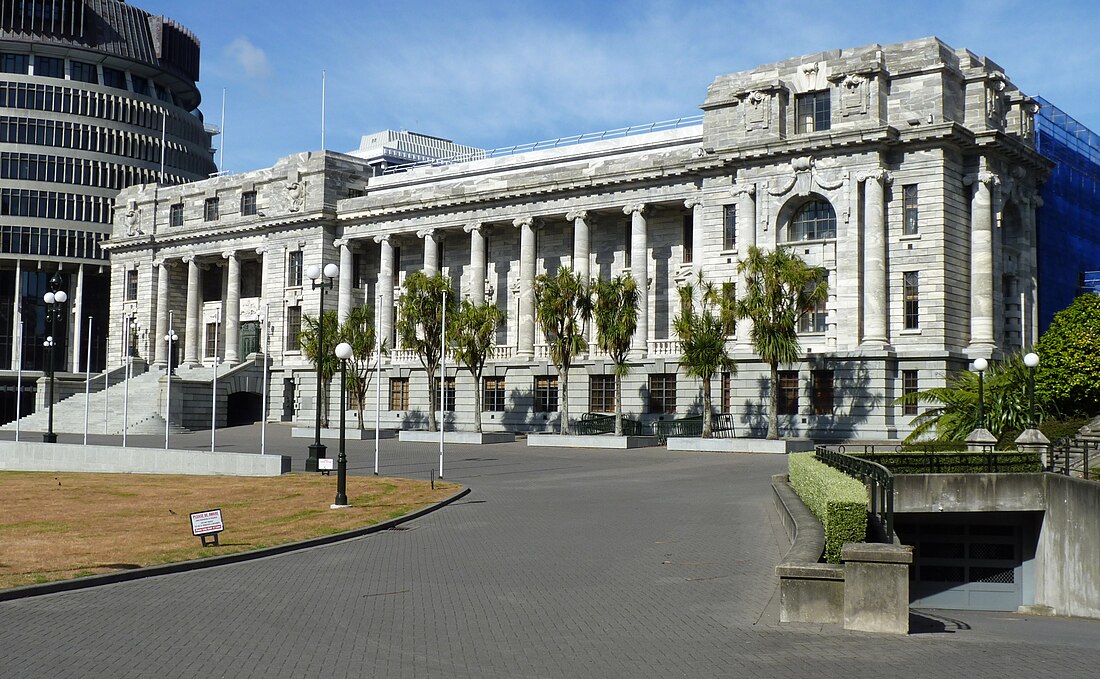Top Qs
Timeline
Chat
Perspective
27th New Zealand Parliament
Term of the Parliament of New Zealand From Wikipedia, the free encyclopedia
Remove ads
The 27th New Zealand Parliament was a term of the New Zealand Parliament. It was elected at the 1943 general election in September of that year.
Remove ads
Remove ads
1943 general election
The 1943 general election was held on Friday, 24 September in the Māori electorates and on Saturday, 25 September in the general electorates, respectively.[1] A total of 80 MPs were elected; 48 represented North Island electorates, 28 represented South Island electorates, and the remaining four represented Māori electorates.[2] 1,021,034 civilian voters were enrolled and the official turnout at the election was 82.8%. In addition, 92,934 military votes were cast.[1]
Remove ads
Sessions
The 27th Parliament sat for three sessions, and was prorogued on 4 November 1946.[3] The twenty-seventh parliament absent-mindedly increased its own life in 1946 when it was forgotten that because of the 24 to 25 September election in 1943 its three years of life ended on 11 October. The House convened to conclude the session on the subsequent day, but no business was conducted. It remained undissolved until 4 November 1946.[4] for election on 26 and 27 November.
Remove ads
Ministries
Peter Fraser of the Labour Party had been Prime Minister since 27 March 1940. He had formed the first Fraser Ministry on 1 April 1940 and the second Fraser Ministry on 30 April 1940.[5] The second Fraser Ministry remained in power until its defeat by the National Party at the 1949 election.[6][7]
A War Cabinet had been formed on 16 July 1940, which held the responsibility for all decisions relating to New Zealand's involvement in World War II. The War Cabinet was dissolved on 21 August 1945.[8]
Party standings
Start of Parliament
| Party | Leader(s) | Seats at start | |
| Labour Party | Peter Fraser | 45 | |
| National Party | Sidney Holland | 34 | |
| Independents | 1 | ||
End of Parliament
Members
Summarize
Perspective
Initial MPs
The table below shows the results of the 1943 general election:
Key
Labour National Democratic Labour Real Democracy Independent
Table footnotes:
- Father of the historian W. H. Oliver[26]
By-elections during 27th Parliament
There were a number of changes during the term of the 27th Parliament.
Remove ads
Notes
References
Wikiwand - on
Seamless Wikipedia browsing. On steroids.
Remove ads


